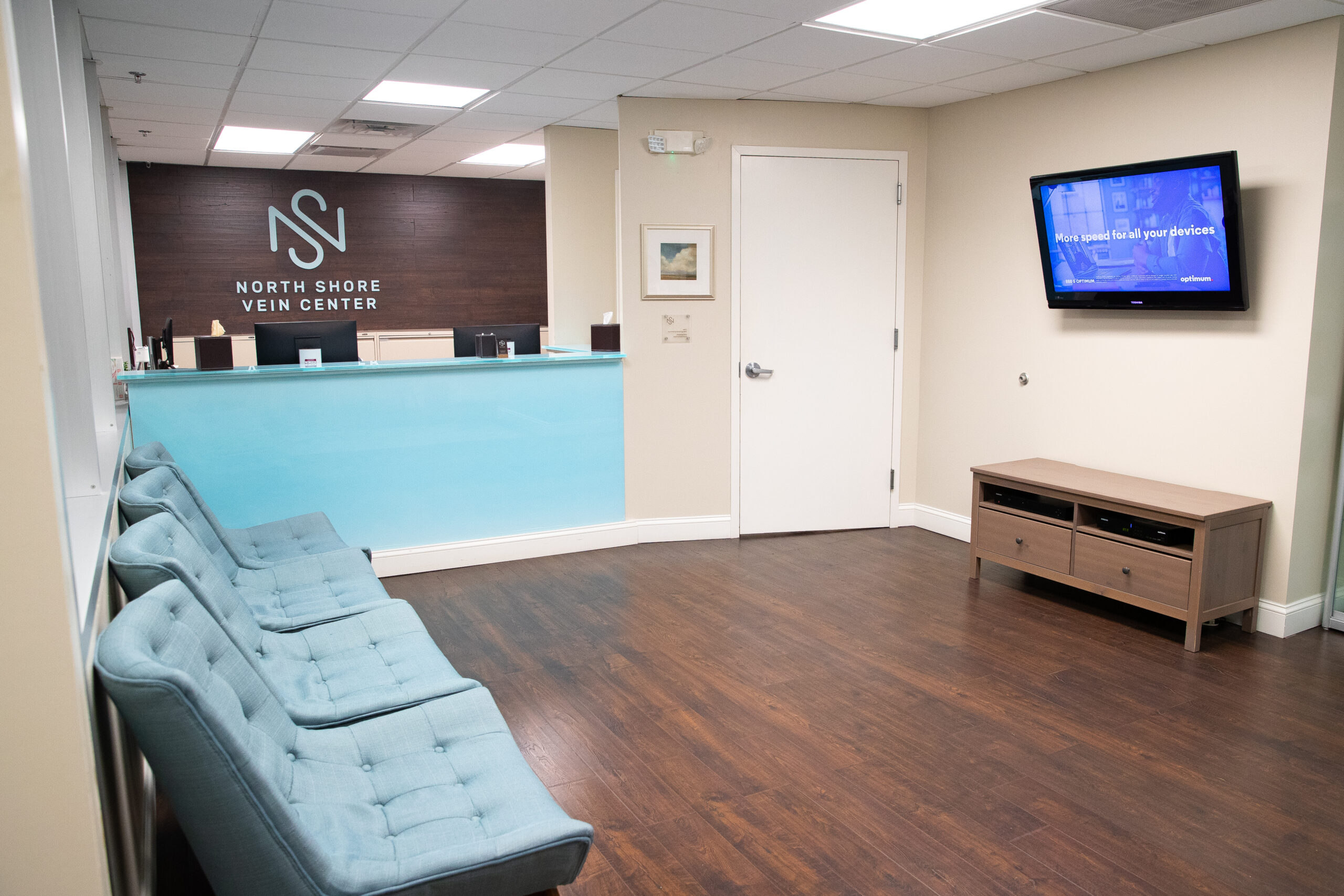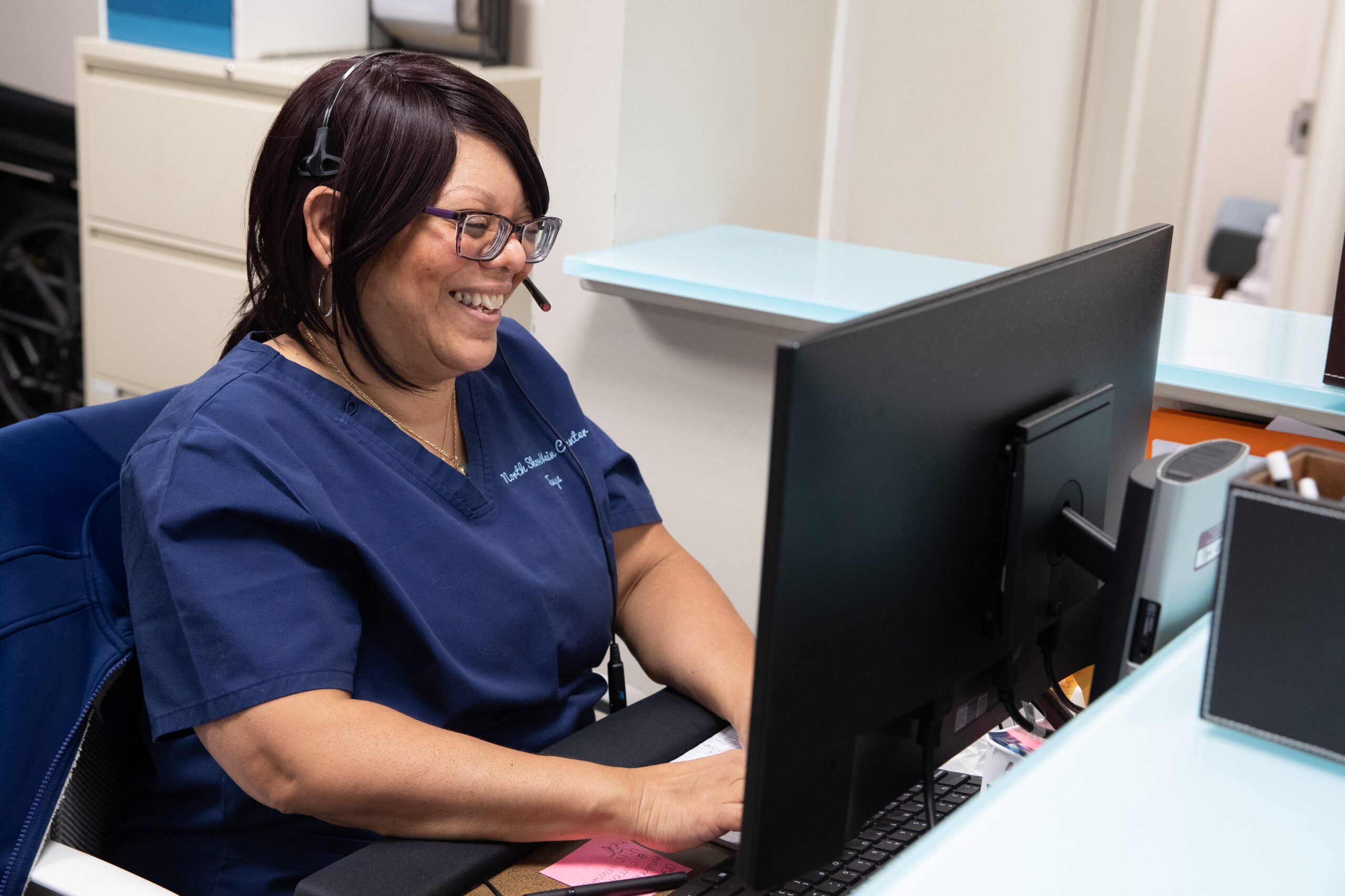Is vein treatment covered by insurance?
Spider veins are considered cosmetic and, therefore, not covered by insurance. However, varicose veins are usually caused by a more significant problem in the leg, so treatment is typically covered by most insurance companies. If you are unsure, visit us for a free vein screening, where we’ll evaluate your legs and guide you step-by-step through the process.
If insurance does not cover your particular procedure, North Shore Vein Center of Long Island now offers CareCredit®.
What are varicose veins?
Varicose veins are veins that have become enlarged and lost their ability to effectively transport blood. When blood doesn’t flow properly, the veins become enlarged because they are congested with blood. They appear distended and ropey-looking and are unable to resume a normal appearance until they are treated. However, treatment will not affect your circulation, because 90% of blood volume is carried by the deep system.
What are spider veins?
Spider veins appear as red, blue or purple sunbursts on the skin surface, but most typically occur on the face, legs or ankles. They are not a health risk alone, but can be symptomatic and cause itching, burning or aching, and can be found alone or in combination with varicose veins.
What causes varicose and spider veins?
Heredity is the number one factor causing varicose and spider veins. Women are more likely to suffer from varicose veins, especially because of pregnancy and hormonal factors. Pregnancy causes increases in hormone levels and blood volume, which in turn causes veins to enlarge. In addition, the enlarged uterus causes increased pressure on the veins. Varicose veins due to pregnancy may improve within several months after delivery, but never go away. Other predisposing factors include occupations involving prolonged sitting or standing, obesity, trauma, and hormonal factors.
What is the best treatment for varicose or spider veins?
A variety of treatment options can be used that involve different procedures, these include endovenous laser therapy, injection sclerotherapy, micro-incisional phlebectomy or resection, and even ligation and stripping. A personalized treatment plan will be recommended by our board certified vascular surgeon during your initial consultation.
Is varicose vein treatment performed in the hospital?
Unlike the old-fashioned vein stripping procedures that required a hospital stay and weeks of recovery, today’s vein treatment is simple and efficient. We perform all vein treatment in the comfort and convenience of our beautiful New Hyde Park, NY practice. We use only local anesthesia, so you’ll walk out of our office shortly after your procedure with no major downtime, incisions or scarring.
What is vein closure by laser?
This is an exciting new laser procedure that involves placing a thin laser filament into the vein through a needle puncture in the lower leg and uses laser energy to heat the vein from inside, causing it to close down. Closure by laser has a 98% rate of completely closing down the vein. The laser procedure can be performed on most patients whose varicose veins are due to an incompetent saphenous vein. Each patient will be evaluated by our surgeon to determine which treatment is best for them.
Does this replace vein stripping?
Surgically removing veins, or “vein stripping”, is sometimes needed, but the method currently used is much different from many people’s idea of vein stripping. The ambulatory micro-incisional phlebectomy procedure is done under local anesthesia in our office. It is much less traumatic to the leg than traditional stripping and leaves minimal to no scarring. Patients walk out of the office, and most are able to resume work and their normal activities within just a few days.

What is injection sclerotherapy?
An FDA-approved solution called Sotradecol® is injected into the vein through a microneedle to induce an inflammatory reaction, which causes the vein to seal shut and gradually shrink away and disappear. Once the vein is sealed, blood is forced into healthier veins. Sotradecol® gives much better results and is far less painful than the traditional hypertonic saline injections.
Why not just inject all the veins?
That method alone results in a higher chance of varicose veins returning. We do not use injection sclerotherapy for very large veins. We will offer the best treatment for each individuals vein problem, which can sometimes require minor surgery to get the best long-term result.
Who are candidates for treatment?
Any individual who has unsightly spider or varicose veins is a candidate, and both large and small veins can be treated effectively. Best results with spider veins are seen in fair skinned individuals. Tanning or prolonged sun exposure should be avoided both before and after treatment.
How many treatments are required?
The number of treatments to provide you with the results you want to achieve will be determined during your initial consultation session where a personalized treatment plan will be developed. For most large bulging veins, one treatment is all that is needed. Spider veins do require several treatments. The average person requires 2-4 sessions spaced 4-6 weeks apart in order to get resolution.

Will it hurt?
Most patients experience little or no pain, and any discomfort lasts only a fraction of a second. Topical anesthesia or ice packs can be applied for pain sensitive patients. While the amount of post treatment pain varies from one patient to another, most require only Tylenol or Ibuprofen for any discomfort.
What about side effects?
Most treatments have minimal side effects and recovery time. Patients often experience slight redness or bruising following treatment, but this goes away within a few days.
What about post-procedural care?
Spider vein patients resume all normal activities immediately with no downtime. The majority of patients treated for varicose veins walk out of the office and return to normal daily activities, including work, within two days. While the amount of post treatment pain varies from one patient to another, most require only Tylenol or Ibuprofen for any discomfort. Complete recovery, including resolution of bruising, takes from 4-6 weeks. Detailed written and verbal instructions will be provided to each patient both before and after treatment.
